A very cute and lovely vintage 35mm viewfinder film camera I came across recently is the compact and lightweight Voigtlander Vitoret. The camera, which is often acknowledged as still useable and capable of providing good results even today, was the initial model of a very successful range of consumer-level cameras manufactured and produced by Voigtländer & Sohn AG, Braunschweig, former West Germany, from 1961-1971.
The fun and easy-to-use Vitoret comes with a very unique 1:1 crystal-frame (bright) viewfinder with framing lines, something you do not find often with cameras from that era, Prontor 125 or 300 shutters, Color Lanthar or Vashkar 50mm 1:2.8 (export model) standard lenses with distance scale market in 'feet', a single long stroke film forward lever, with the shutter release button midway down the front plane of the camera, and a countdown frame counter located on the bottom plate of the camera.
The only other item that you might want to notice aside from the cold shoe and the film rewind knob located on the almost flush top plane of the camera is the small film rewind release button located just right to the cold shoe. Other camera control elements, the focus (distance) scale, shutter, and aperture setting rings are located on the lens mount itself.
The Vitoret was continuously improved over its production period, with advancements that include the inclusion of an exposure meter, a version for Rapid Film Cassettes, a flash accessory shoe, a coupled rangefinder, and an exposure meter. These models include the Vitoret D (1961), Vitoret Rapid D (1964), Vitoret DR (1964), Vitoret F (1964), Vitoret Colora F (1964), Vitoret L (1964), Vitoret R (1965), Vitoret LR (1967).
Basic Camera Features
The Vitoret is seen in two iterations, the post-1967 series has square-edged bodies while the pre-1967 series had rounded bodies similar to the Vito range.
A plain front, significantly endowed by the huge 1:1 crystal-frame viewfinder, the camera has only the shutter release button to the left of the lens mount, and the lens housing itself with the foremost element being the focusing ring, which, besides the etched numeral distance indicators, the ring is also marked for rapid zone focusing by a red colored spot for portraits, a red colored triangle for groups, and a red circle for landscapes.
Next is the shutter speed ring for the Prontor 125 leaf shutter, with click-stops at B, 1/30, 1/60, and 1/125 second. Further back is the aperture setting ring, with click stops from 1:2.8~22. The shutter can only be released after the film has been fully advanced to the next frame.
The backplane of the Vitoret is equally plain, with a hinged film back extending all the way across the film box, released by a twin pinch release lever located on the left shoulder of the camera body. On the upper part of the camera back is the huge framed viewfinder eyepiece, and to the right, the film forward crank.
On the top plane of the camera, just the film rewind knob, the cold shoe, and the film rewind release button next to it. The release button needs to be depressed while the film is rewound.
On the bottom plane, the tripod socket with the engraved camera's serial number, and a deductive type, self-reset film counter window.
A plain and simple film box, with the film canister chamber to the left, the film shutter widow, sprocket gear, and the take-up spool lined to the right.
Film Loading and Rewind
Loading film to the camera is equally a straightforward task. Start by opening the filmback by releasing the catch, next, pull up the film rewind knob so that you can insert the film canister into the chamber, do so, and push the rewind knob back in to secure the film roll.
Pull the film tab across the film box opening, insert the tab end into the slit of the take-up spool, tension the film properly across the back, and make sure that the perforation is aligned with the sprocket gear before closing the film back.
Next do a two-blank shot sequence to forward the unexposed part of the film to align with the shutter window, turn the camera up to reset the film counter window to 36, or 24, depending on the film roll you are using, and you are all set and ready to go.
To rewind the film back into its canister, first press and hold the film rewind release button, and start turning the film rewind knob, in the direction indicated by the arrow (clockwise) until the film is fully wound back into the canister. Open the film back to unload the film canister for processing.
Viewfinder Readout
The crystal-frame viewfinder shows 1:1 life-sized images. When taking portrait shots, at 3.5 feet (1+ meter), use the short lines on the upper area of the viewfinder to set the limit of the image frame.
For rapid focusing mode, use the red distance scale icons for the following distance setting:
- Red dot for portrait shots distanced at 4.5 feet (1.37 meters)
- Red triangle for group shots distanced at 11 feet (3.35 meters)
- Red circle for landscape shots distanced at 33 feet (10 meters) and beyond.
The Sunny 16 Rule
The Vitoret is a fully manual camera and it does not need any battery to run any of its functions. There is not even a film ISO dial for the film speed setting, hence the only source of exposure information for the camera shutter speed/aperture setting has to be the Sunny 16 Rule, the method of estimating correct daylight exposures without a light meter in photography.
As an example, on a clear, sunny day, when you are using an aperture of 1:16, this rule recommends a shutter speed equal to the reciprocal of your film ISO (1/ISO) speed value. so, when using ISO 100 film, use a shutter speed of 1/100th of a second, and use a shutter speed of 1/200 second when using ISo 200 film.
Camera Body Weight
The camera's body weight, on my kitchen scale, is a very light 415 grams without film. The Vitoret does not have lugs for hooking up shoulder straps either, so carrying the camera around is best in its own leather case, or in a makeshift condition, a container pouch of some sort.

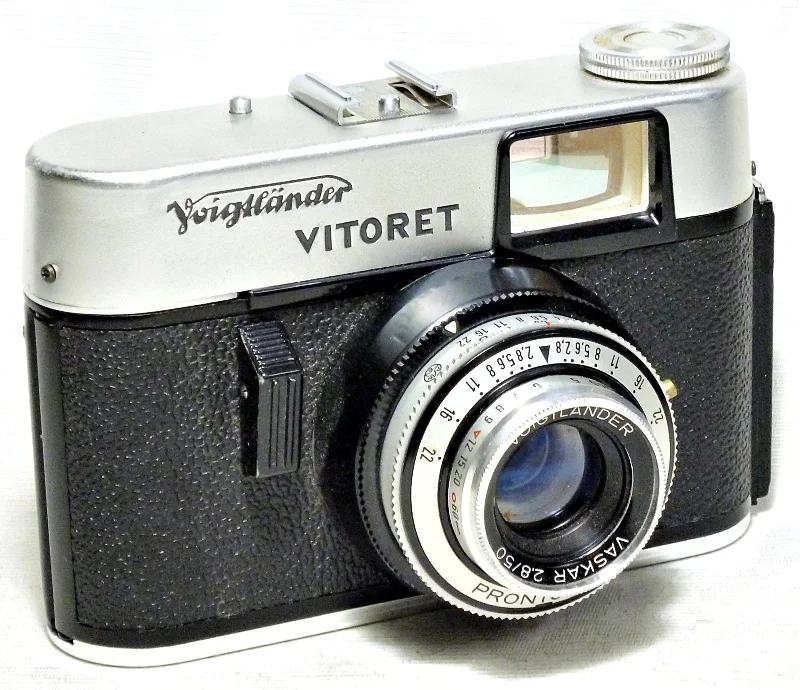
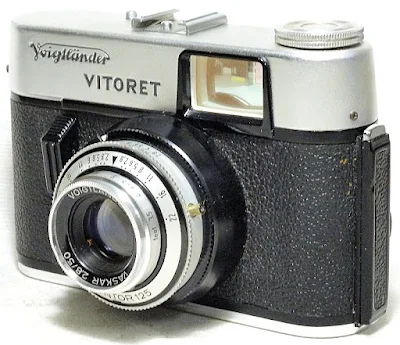
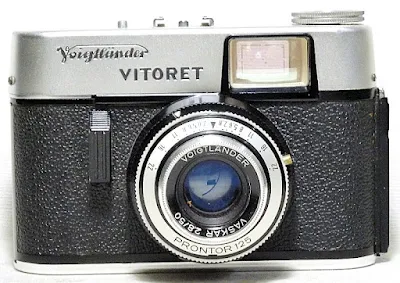

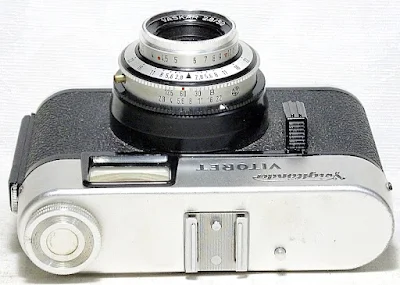
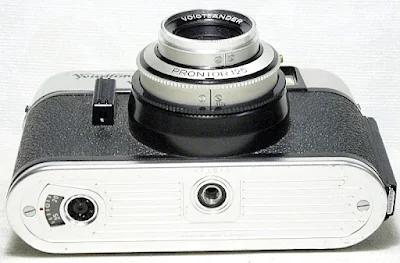

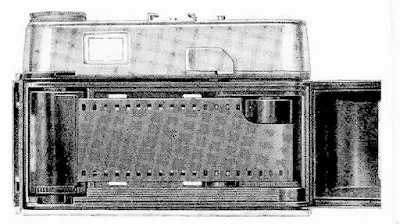













I had one of these between the ages of 10 and 21 (1978), and it went round the world with me. In those days you didn't stress over the lack of a light meter, you just guessed, and usually it worked out. I have some great slides taken with it.
ReplyDelete